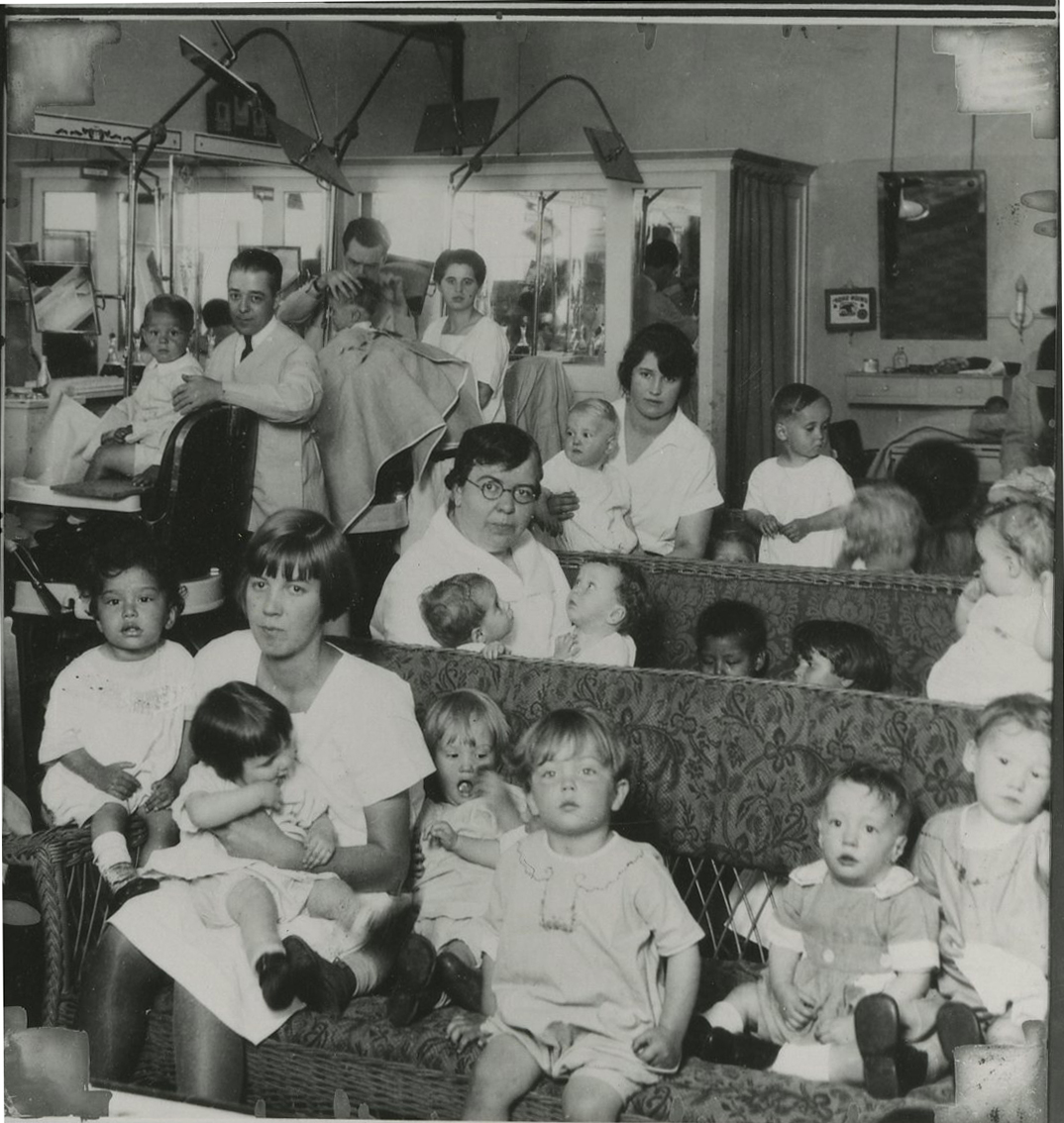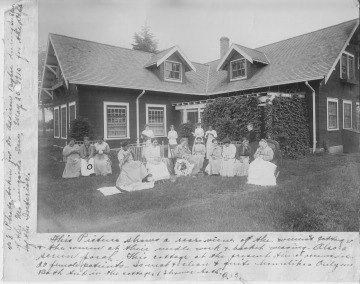The Portland Free Dispensary, an early effort to provide health services to the underserved in Portland, was a model of collaboration between the city’s charitable organizations and its medical community.
In 1904, Valentine Prichard, supervisor of the Portland Public School kindergartens, issued a report on what she found to be the deplorable living conditions of many of the city’s poorest residents. As a result, a group of prominent local women, including Caroline Ladd and Helen Ladd Corbett, organized to establish and fund the People’s Institute Settlement Work. Modeled on Chicago’s Hull House, the settlement house worked to provide social services for the urban poor.
By 1907, it was clear that the service most in demand for many of Portland’s neediest people was health care. Inspired by the idea that those who were physically capable of helping themselves would do so, the group founded the Portland Free Dispensary. The People’s Institute had already obtained the necessary medical equipment during its efforts to provide health care to refugees from the 1906 San Francisco earthquake. The equipment was moved into a space shared with the Boys’ Club, and several physicians were enlisted as volunteers.
In 1909, Dr. Clarence J. McCusker made a report on the dispensary’s activities to the faculty at the University of Oregon Medical School (UOMS), then located at Twenty-Third and Lovejoy streets. Soon after, the school agreed to affiliate with the dispensary on the condition that larger quarters would be provided for the clinics. Accordingly, the equipment was moved to five rooms on the lower floors of the quarters of the People’s Institute at Fourth and Burnside streets.
Third- and fourth-year medical students from UOMS made mandatory rotations through the clinics, working alongside volunteer physicians. Medical graduate Adelaide Lake later shared her recollections of time spent in the Portland Free Dispensary, noting that “some of the most important assistance gleaned by the students from the dispensary is aside from knowledge of medicine and surgery which they gain there. They learn through contact with people who are aided by the organization that medical aid can be benefited by a knowledge of home conditions of the patient and by friendly aid. They are taught that cures are often more easily effected by elimination of aggravating surroundings and mental conditions than by the administration of drugs.”
Forty-one separate clinics were eventually established at the dispensary, including the state’s first well-baby clinics. The Visiting Nurse Association and nursing schools around the city provided nursing services. Local hospitals also affiliated themselves with the dispensary, and many patients were transferred to the Multnomah County Hospital, St. Vincent Hospital, and Good Samaritan Hospital. Medical prescriptions were given out as needed, and local druggists were enlisted to provide medications to dispensary patients “in accordance with the individual’s ability to pay”—often at no cost.
By 1916, five rooms were no longer sufficient to accommodate the growth of services, and the Dispensary was moved to a building on the corner of Fourth and Jefferson streets. In 1921, a local headline declared: “Portland Free Dispensary is building on the principle that a healthful city is a hopeful and a happy city and that the right of every man is health.” By 1923, the dispensary was seeing up to 165 patients a day and providing over 25,000 treatments per year.
The arrangement begun in 1907 continued for twenty-four years, until the Portland Free Dispensary was formally turned over to UOMS. In February 1931, the Outpatient Clinic of the medical school opened in a new building on the Marquam Hill campus, outfitted with the latest in medical technology and amenities. Both building and furnishings had been funded by a $400,000 grant from the Rockefeller Foundation. All dispensary employees were transferred to the new Outpatient Clinic facility.
The building still stands on the Marquam Hill campus of the Oregon Health & Science University and still houses many of the university’s outpatient clinics. In 2006, the building was renamed Sam Jackson Hall.
In 1939, Valentine Prichard, who had served as superintendent of the People’s Institute since its founding, wrote: “The record of history is that upon the initiative of private philanthropy depends the recognition of public duty. . . . Legislatures and municipalities have little time for originating and testing new programs, and it is here that philanthropy has rendered its most patriotic service by accepting as its mission the awakening and the stimulating of the conscience of the state and the nation.”
-
![]()
Children's clinic at the Portland Free Dispensary.
Courtesy Oregon Health & Sciences University Digital Collections
-
![]()
Staffer of the Arleta clinic with a mother and her child during a well baby visit. The clinic was affiliated with the Peoples Institute and Portland Free Dispensary, c.1920.
Courtesy Oregon Health & Sciences University Digital Collections
-
![]()
Baby division at the Portland Free Dispensary, c.1920.
Courtesy Oregon Health & Sciences University Digital Collections
-
![]()
Physician examining a woman at the Portland Free Dispensary, c.1920.
Courtesy Oregon Health & Sciences University Digital Collections
-
![]()
Nutrition clinic at the Portland Free Dispensary, c.1920.
Courtesy Oregon Health & Sciences University Digital Collections
Related Entries
-
![Albertina Kerr Centers]()
Albertina Kerr Centers
The Albertina Kerr Centers, a nonprofit organization with headquarters …
-
![Friendly House, Inc.]()
Friendly House, Inc.
The Marshall Street Community Center, founded by the socially minded Fi…
-
![Morningside Hospital]()
Morningside Hospital
In 1883, Dr. Henry Waldo Coe founded Morningside Hospital in three larg…
Related Historical Records
Map This on the Oregon History WayFinder
The Oregon History Wayfinder is an interactive map that identifies significant places, people, and events in Oregon history.
Further Reading
Lake, Adelaide. “Free Dispensary is Laboratory for Medical Students.” Old Oregon 5:8 (1923).
Prichard, Valentine. A Brief History of the Portland Free Dispensary, a Department of the Peoples' Institute in Affiliation with the Medical School of the University of Oregon. Portland, Ore.: Portland Free Dispensary, 1920.
Prichard, Valentine. Origin and Development of Settlement Work in Portland. Portland: University of Oregon Medical School, Portland Child Guidance Extension, 1942.








